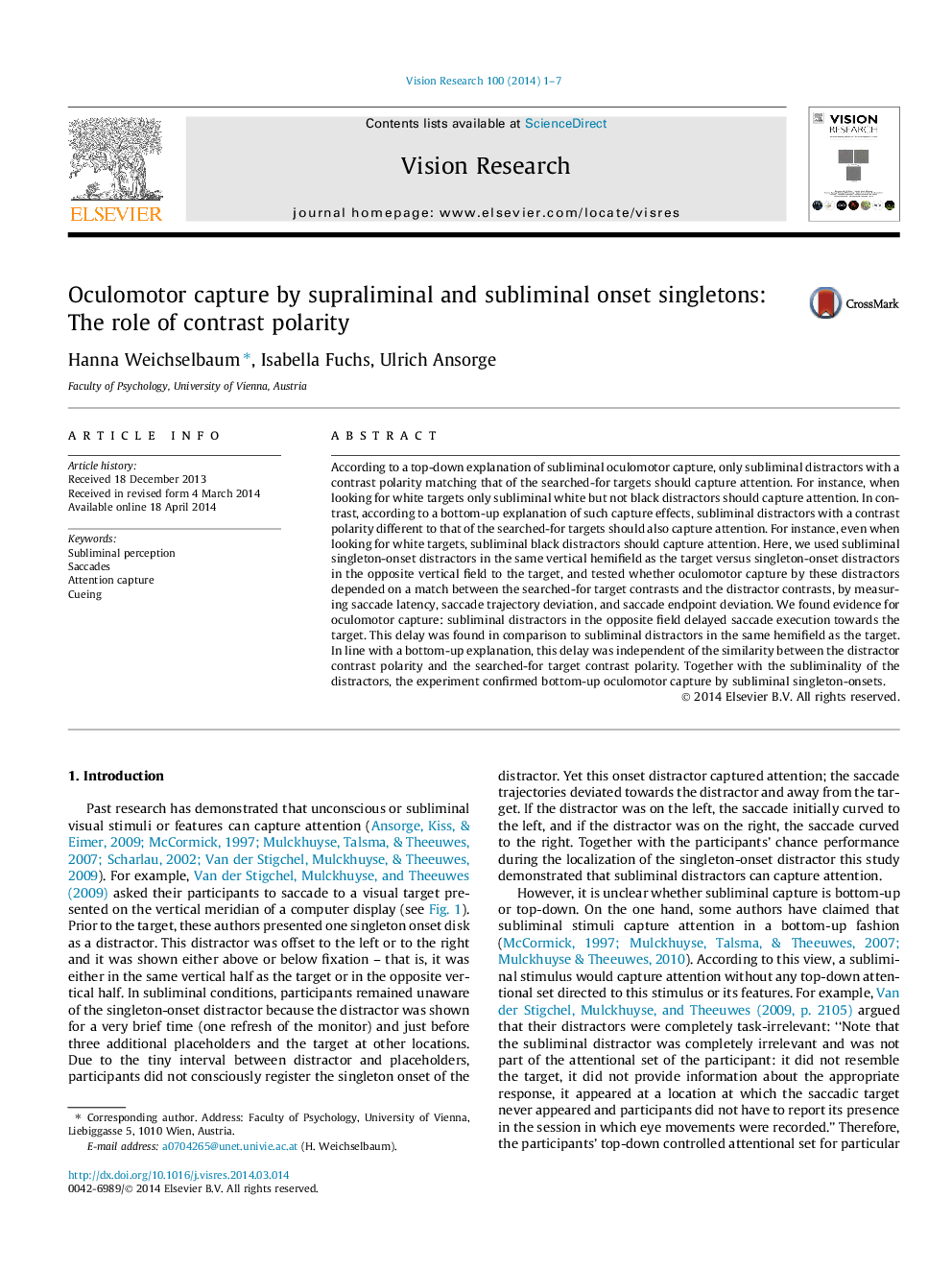| Article ID | Journal | Published Year | Pages | File Type |
|---|---|---|---|---|
| 6203319 | Vision Research | 2014 | 7 Pages |
â¢Eye tracking is used to show how subliminal stimuli capture attention.â¢Subliminal onset singletons appear to capture attention in an automatic way.â¢There appear to be fundamental differences between subliminal and supraliminal capture.
According to a top-down explanation of subliminal oculomotor capture, only subliminal distractors with a contrast polarity matching that of the searched-for targets should capture attention. For instance, when looking for white targets only subliminal white but not black distractors should capture attention. In contrast, according to a bottom-up explanation of such capture effects, subliminal distractors with a contrast polarity different to that of the searched-for targets should also capture attention. For instance, even when looking for white targets, subliminal black distractors should capture attention. Here, we used subliminal singleton-onset distractors in the same vertical hemifield as the target versus singleton-onset distractors in the opposite vertical field to the target, and tested whether oculomotor capture by these distractors depended on a match between the searched-for target contrasts and the distractor contrasts, by measuring saccade latency, saccade trajectory deviation, and saccade endpoint deviation. We found evidence for oculomotor capture: subliminal distractors in the opposite field delayed saccade execution towards the target. This delay was found in comparison to subliminal distractors in the same hemifield as the target. In line with a bottom-up explanation, this delay was independent of the similarity between the distractor contrast polarity and the searched-for target contrast polarity. Together with the subliminality of the distractors, the experiment confirmed bottom-up oculomotor capture by subliminal singleton-onsets.
